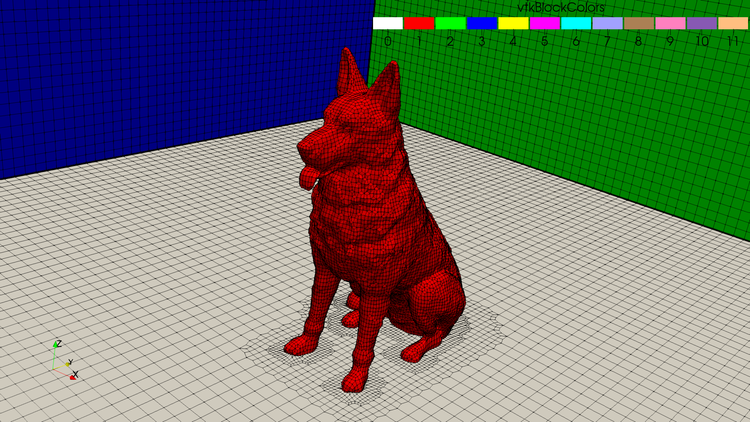Difference between revisions of "Installing in Windows 10 by Jozsef Nagy"
Jump to navigation
Jump to search
Jozsef Nagy (talk | contribs) |
Jozsef Nagy (talk | contribs) |
||
| Line 16: | Line 16: | ||
In this [https://www.youtube.com/watch?v=xj0dB_PsElg video] you can learn, how you can install OpenFOAM more or less natively in Windows 10. For this we will use the new Windows 10 feature called Bash on Ubuntu on Windows. I will also run a very short simulation to show you, that it really works. | In this [https://www.youtube.com/watch?v=xj0dB_PsElg video] you can learn, how you can install OpenFOAM more or less natively in Windows 10. For this we will use the new Windows 10 feature called Bash on Ubuntu on Windows. I will also run a very short simulation to show you, that it really works. | ||
| − | [[File: | + | [[File:Dog_JN.png|750px|right|velocity magnitude of the elbow case at t=75s]] |
The steps required to install OpenFOAM in Windows 10: | The steps required to install OpenFOAM in Windows 10: | ||
Revision as of 07:51, 25 March 2020
- contributor: Jozsef Nagy
- affiliation: eulerian-solutions e.U., Linz, Austria
- contact: click here for email address
- OpenFOAM version: v1912
- Published under: CC BY license (creative commons licenses)
Go back to Tips.
Go back to 3 weeks series.
How to install OpenFOAM and run a simulation in Windows 10
In this video you can learn, how you can install OpenFOAM more or less natively in Windows 10. For this we will use the new Windows 10 feature called Bash on Ubuntu on Windows. I will also run a very short simulation to show you, that it really works.
The steps required to install OpenFOAM in Windows 10:
- Enable developer mode (only required BEFORE Microsoft's Creators update (v1709) in October 2017!)
- Enable Windows Subsystem for Linux + restart
- Download and install Bash on Ubuntu on Windows
- Download the tar file of OpenFOAM from openfoam.com
- Extract tar file
- Set OpenFOAM environment in .bashrc
- Run simulation
Useful tips
In this second video you will find useful tips for OpenFOAM in Windows 10. You will learn, how you can start both Linux and Windows application with Bash on Ubuntu on Windows (e.g. Paraview) in order to be able to work just like in Ubuntu.
